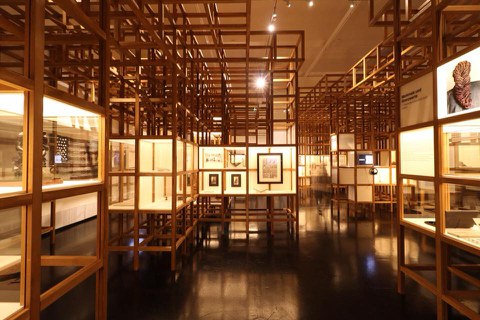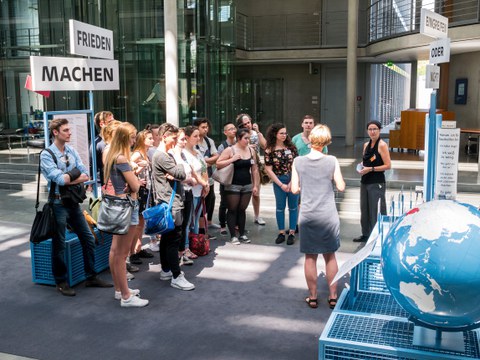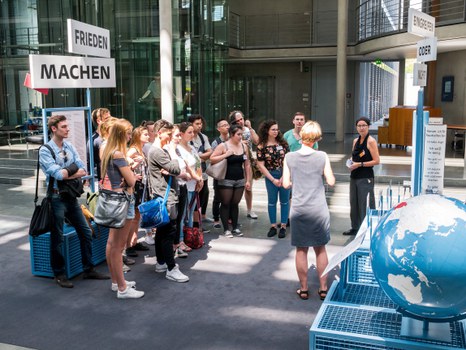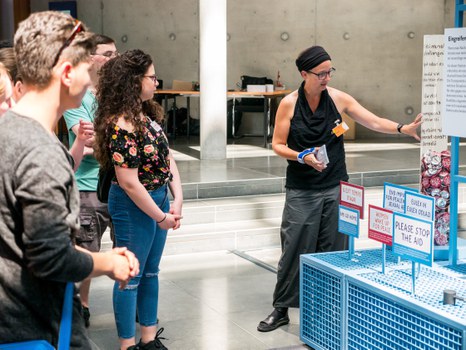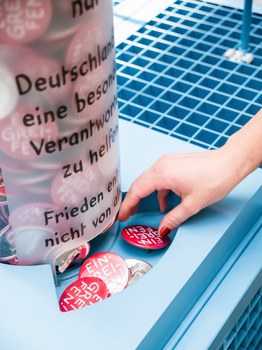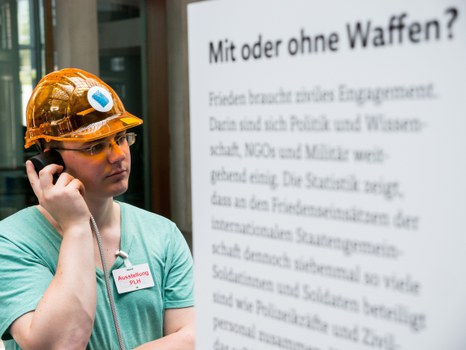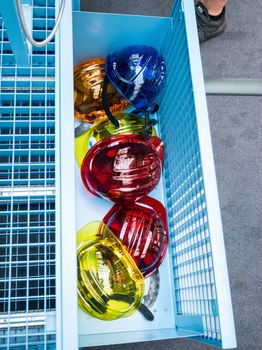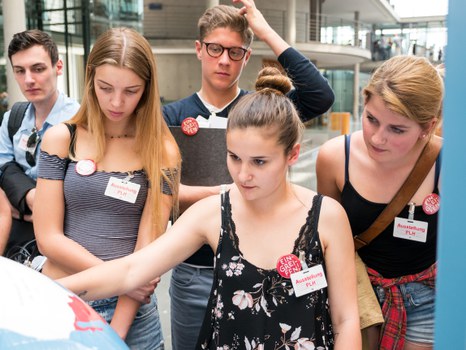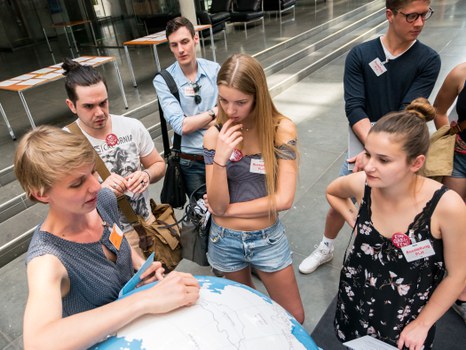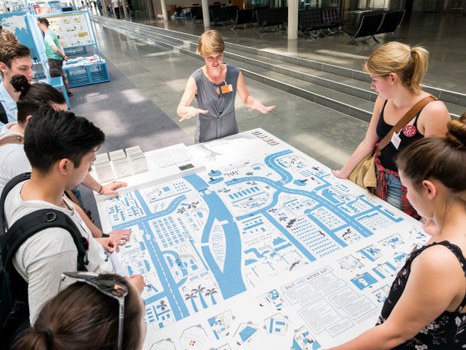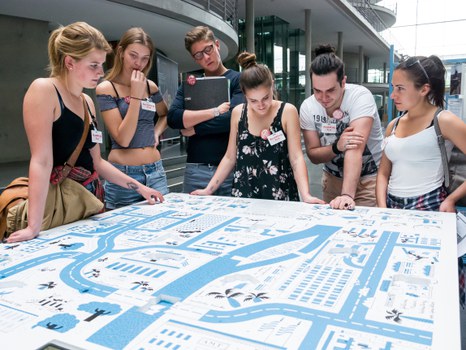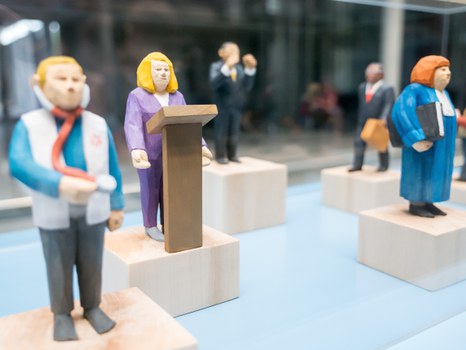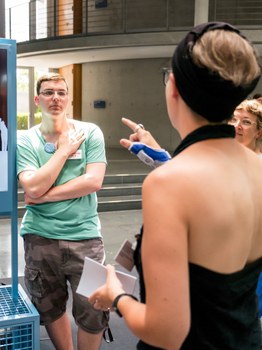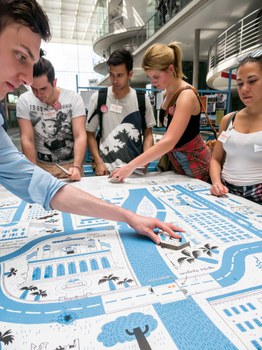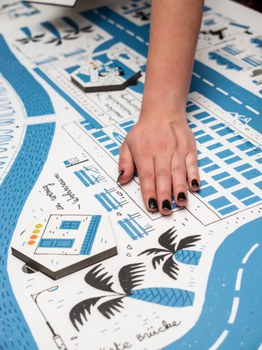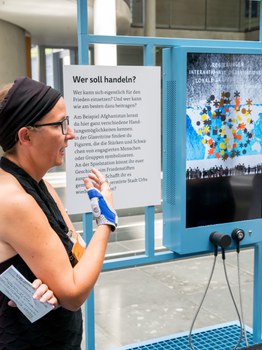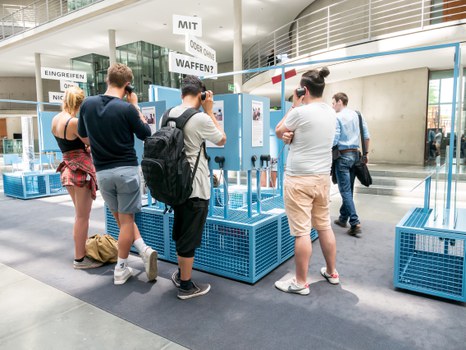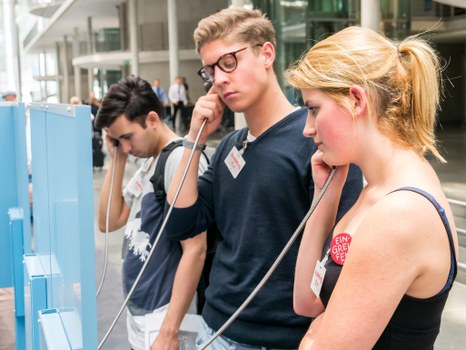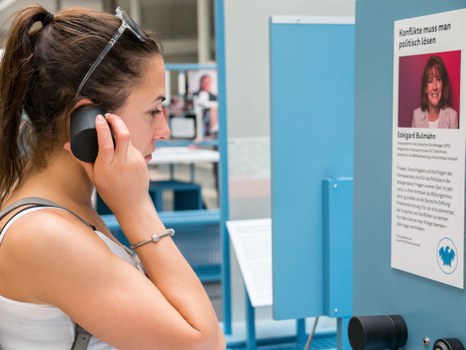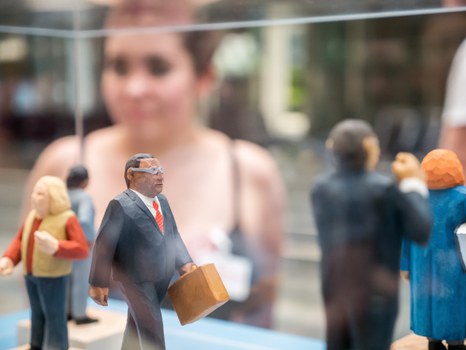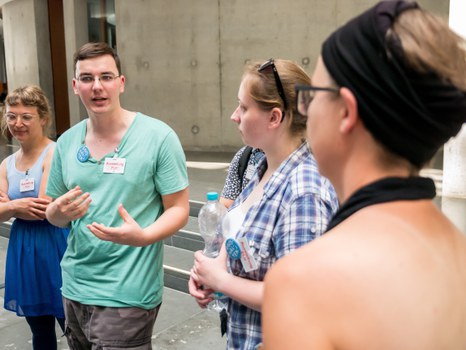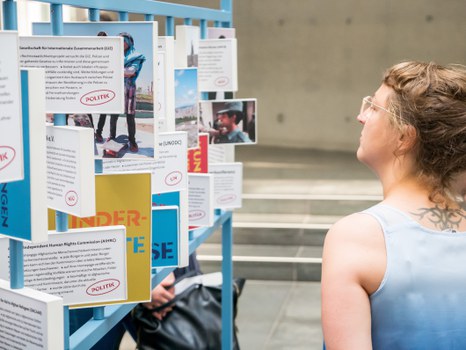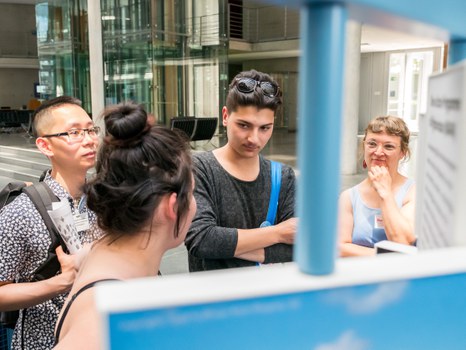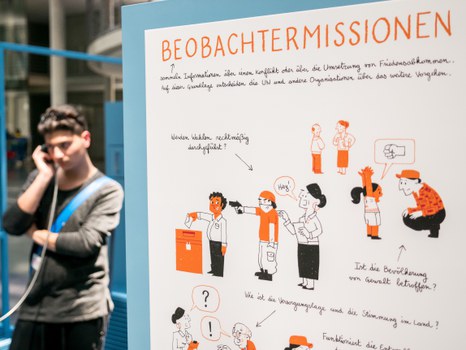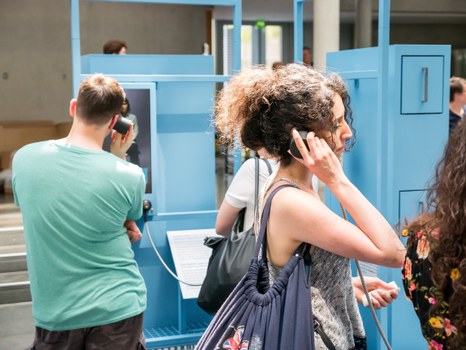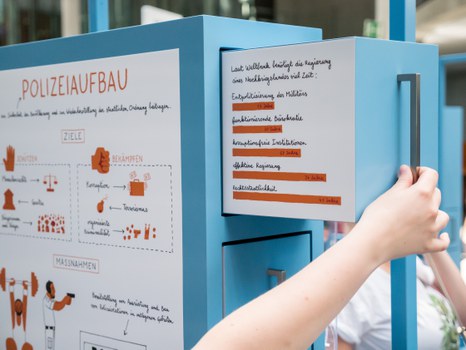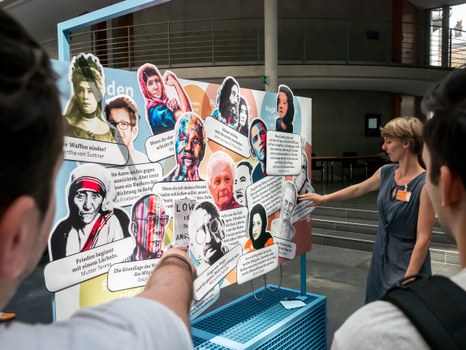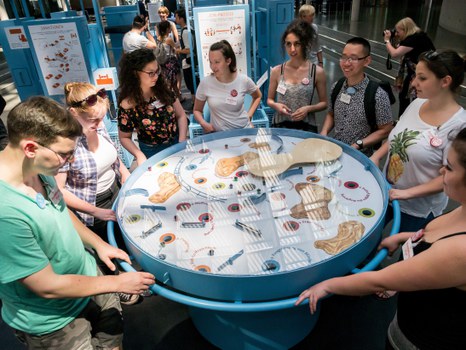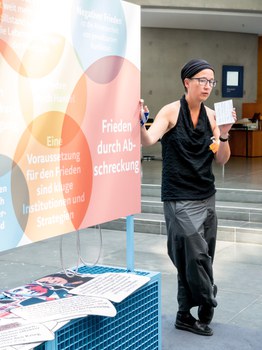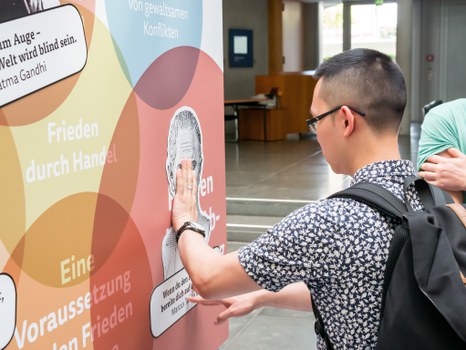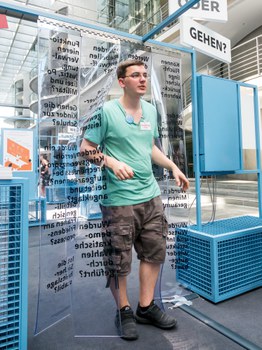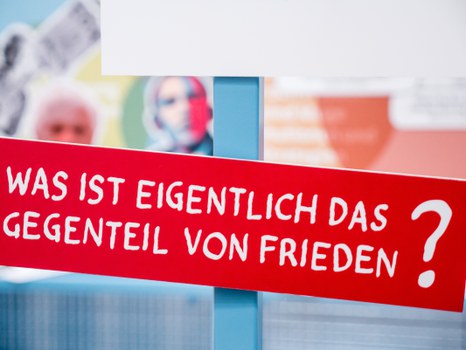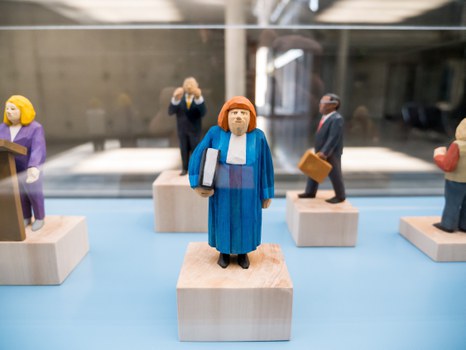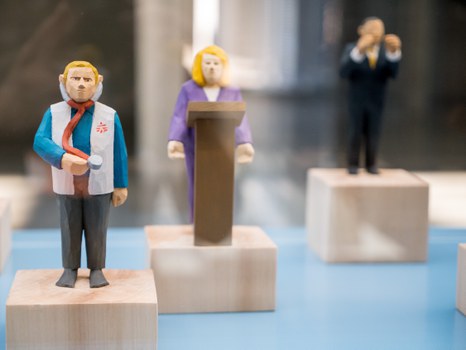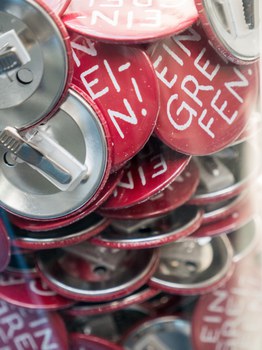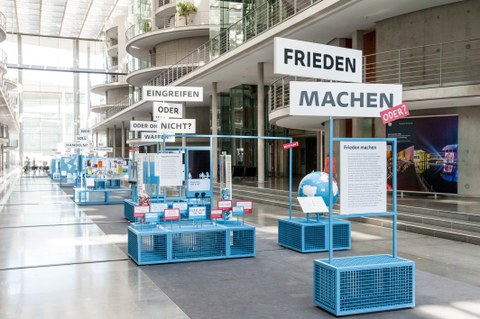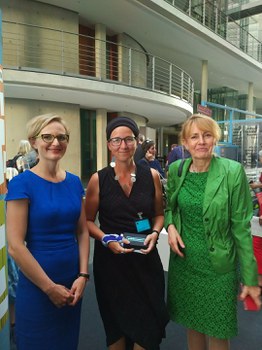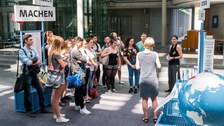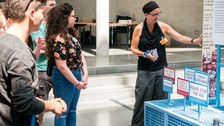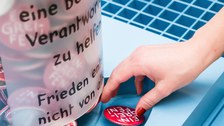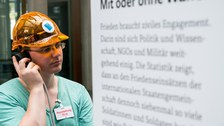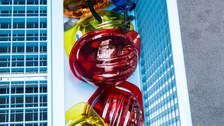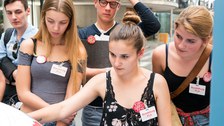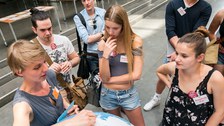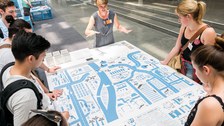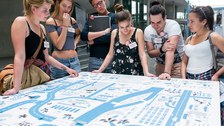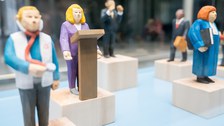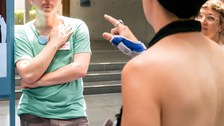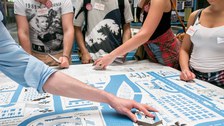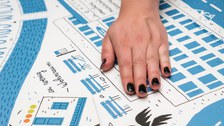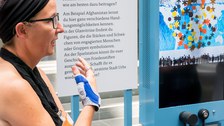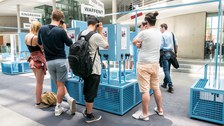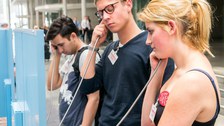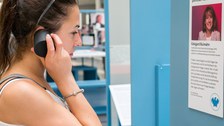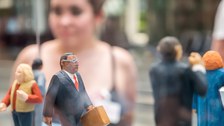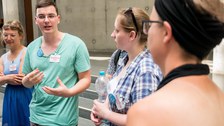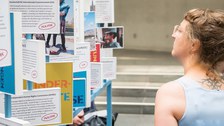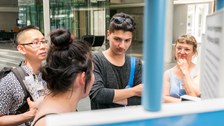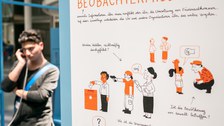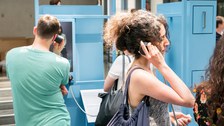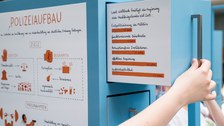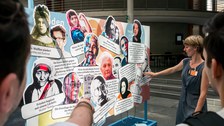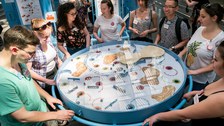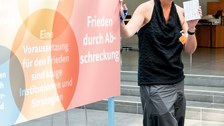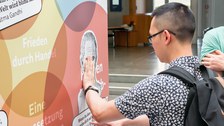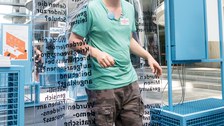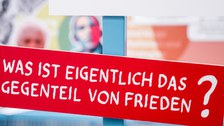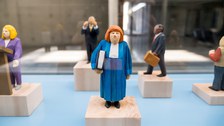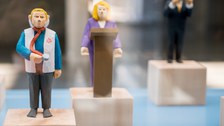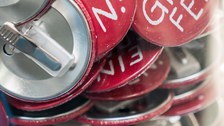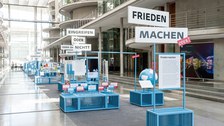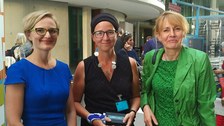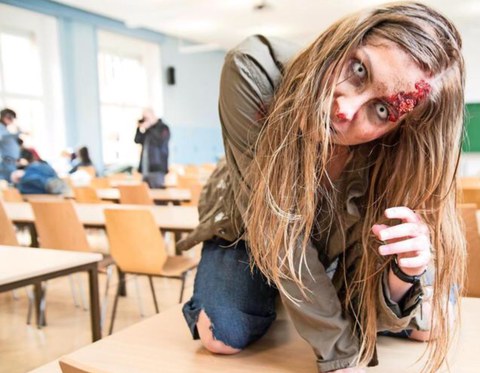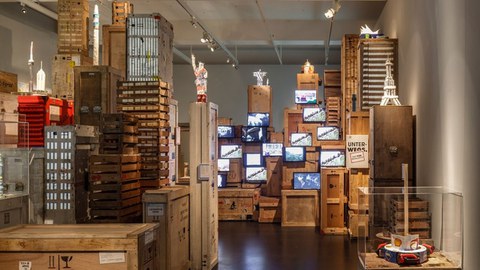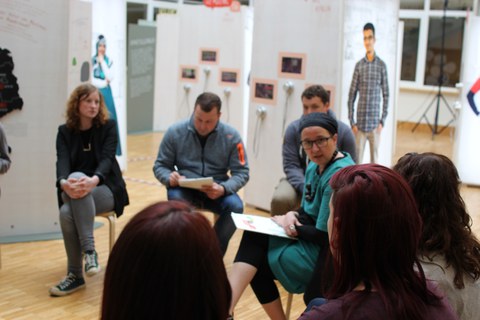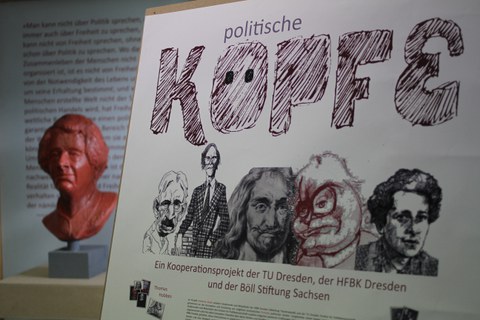Exhibitions
At the John Dewey Research Center for Didactics of Democracy, we are interested in the potential of exhibitions for extracurricular political education. We deal with the possibilities of space, scenography, objects and displays as educational occasions from a didactic perspective.
Even though the development of an exhibition is a really time-consuming process and ties up considerable resources, we plan to continue participating in exhibitions in the future. You can find an overview of all the exhibitions we have been involved in in the past on this page.
2018 - Racism. The invention of Human Races
The exhibition Racism. The Invention of Human Races, which opened at the Deutsches Hygiene-Museum in May 2018, was accompanied by a member of the research unit with an ethnographic view of visitors. The central question was how visitors appropriate the exhibition and what clues arise in this context for civic education processes.
2017 - Making peace: Exhibition in the German Bundestag (curation)
Should we intervene in the conflicts of other countries and societies? And if so, what can such intervention look like? In which situations does it make sense and when is it a success? In many crisis regions today, a large number of civilian experts work alongside international troops with the aim of creating lasting peace.
Their work is the focus of this exhibition, which our director developed on behalf of the Federal Agency for Civic Education. It was opened at the German Bundestag in June 2017 and, like its predecessor, the exhibition "Was glaubst du denn?! Muslime in Deutschland", the exhibition presents the principles, instruments and controversies of civil peace work. International and local experts report on their experiences in project work - on opportunities, challenges and dilemmas. Interactive stations encourage visitors to think and reflect and offer space for their own opinions and suggestions. You can find out more about the exhibition on the Bundestag website and the educational material for the exhibition can be found here.
2017 - HOPE: an exhibition project by New Szenario in cooperation with the Kustodie of TU Dresden (advice and support)
We were entrusted with the conceptual consulting for the exhibition on the topic of zombies organized by the Office for Academic Heritage, Scientific and Art Collections of the TU Dresden. Thanks to the project on television series research based at the Chair of Didactics of Civic Education, the Office for Academic Heritage, Scientific and Art Collections was able to provide very good advice and support through lectures, among other things by implicating the figure of the zombie . Anyone wishing to view the resulting images can do so online at any time. The works are permanently exhibited online at: http: //newscenario.net/hope/.
2014 - The New Germany. On migration and diversity:
Interventions by GK students in an exhibition at Deutsches Hygiene-Museum Dresden
In a joint project between the Chair of Didactics of Civic Education and the Deutsches Hygiene-Museum Dresden, students developed mediation interventions in the existing exhibition. The concepts ranged from replacing the C-texts, performative stagings and disturbances to the development of completely new exhibits, which became a permanent part of the exhibition until the end of the regular exhibition. Find out more about the exhibition here.
2014 - Was glaubst du? Muslime in Deutschland: Touring exhibition in German schools (scientific support and accompanying educational material)
The exhibition "Was glaubst du? Muslime in Deutschland" was created on behalf of the Federal Ministry of the Interior by the Federal Agency for Civic Education in 2012/2013. Our director supported the development of the exhibition on the scientific advisory board and developed the educational material to accompany the exhibition together with the Federal Agency for Civic Education. The exhibition itself is aimed at lower secondary school students from different types of schools.
It shows facets of the everyday lives of Muslims in Germany. Their religiosity is just one of many aspects that are important in the lives of young people. Accordingly, the exhibition is not, or not primarily, an exhibition about a social group that cannot be clearly defined. Rather, it is about individual lifestyles and social coexistence. The exhibition invites visitors to reflect on identities and attribution processes. Debates about identities and social models are addressed as a core element of political debates, and the question is raised as to how they affect different public spaces. The exhibition is therefore less a format for imparting knowledge than an occasion for reflection, discussion and debate.
The exhibition is still touring schools throughout Germany. If you would like to know more, please visit the exhibition website Link
2011-2013 - Political Minds: Exhibition at the Institute of Political Science in cooperation with the HfBK and the Heinrich Böll Foundation Saxony (curation)
Political scientists tend to consider their subject - i.e. politics - to be a rather abstract matter. Politics is and should be rational and not dwell on the superficial. Politics is made with the mind and is aimed at minds. To understand politics, you have to read books - or at least the newspaper. Too often we forget that we also approach politics through our eyes, our bodies and our appearances. What hasn't been written about Putin with a naked torso, Berlusconi's false hairline, the thin and fat Joschka Fischer or Helmut Kohl's belly. In politics, we are not only interested in thinking - we are also interested in people. This is no different for political theorists. Why, for example, do Leviathan and Thomas Hobbes have the same hairstyle and beard? Why does Jürgen Habermas in particular advocate a discourse free of domination? Why does John Rawls look like a clergyman in many pictures? In the "Political Heads" project, political thinkers were therefore approached through their concrete appearances - specifically through their heads. Students and staff of the Institute of Political Science prepared central concepts and thoughts of great political thinkers such as Hobbes, Kant, Rawls, Rousseau, Dewey, Arendt and Habermas for students of the HfBK Dresden in such a way that they were able to work together on sculptural portraits of these personalities. Some practiced their visual communication skills, others their sculptural abilities. The result is 10 sculptures that you can admire every day at the Institute of Political Science.

